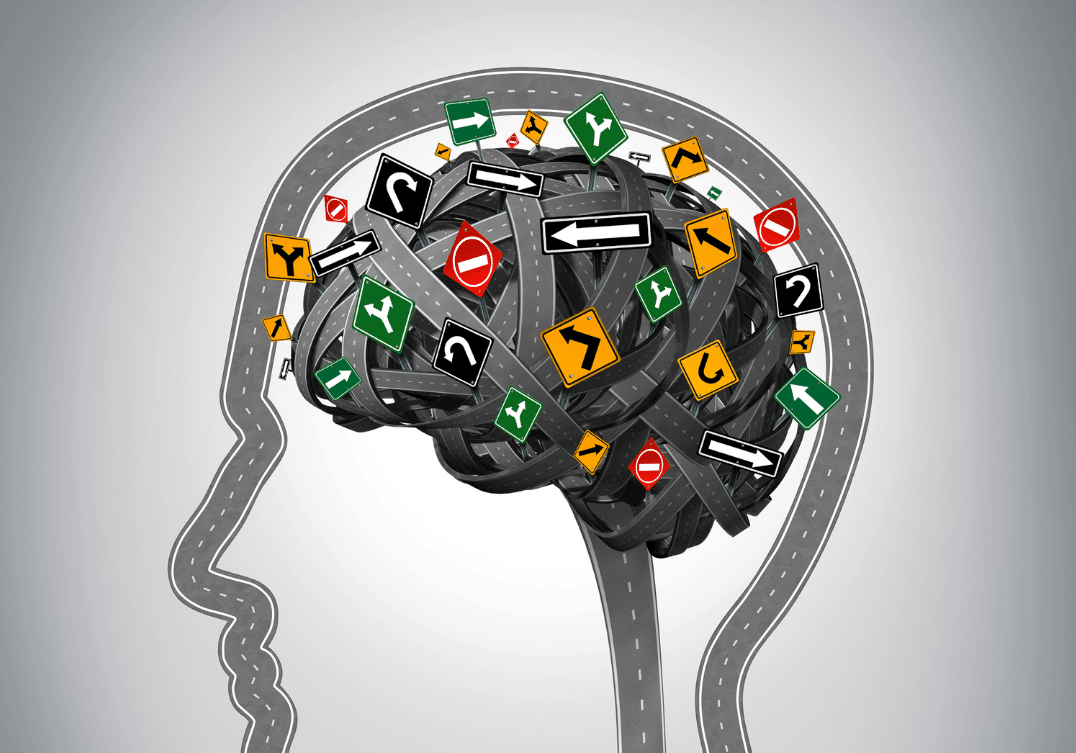HPA Axis Dysfunction Part 1: Causes and Symptoms

When you understand how the stress response works in your body, you can protect your health and maintain optimum performance amidst the stress.
Fact checked by Nattha Wannissorn

Stress is unavoidable nowadays, whether it be from traffic, work, family, the economy, etc. For most people, unmanaged stress can throw off their stress response system (hypothalamus-pituitary-adrenal axis or HPA axis). This can cause HPA axis dysfunction, or what many call adrenal fatigue. The good news is that you don’t have to let the stress affect your health. When you understand how the stress response works in your body, you can protect your health and maintain optimum performance amidst the stress.
In part 1 of this article, you will learn about your stress responses, along with the symptoms and causes of HPA axis dysfunction. In part 2, we’ll share strategies to mitigate many negative effects of stress to protect your health and performance.

What Is The HPA Axis And How Does The Stress Response Work?
Stressful experiences activate your stress response, which is the interaction between your brain and glands in your body. This interaction is the hypothalamus-pituitary-adrenal axis (HPA axis), which are the exact hormone glands in your body that are involved, in that order.
The HPA axis helps you respond to stress. Then, ideally, it should get you back to homeostasis or balance. Let’s take a closer look at what happens when your body experiences stress.
Short-Term Effects Of Stress
When you first experience stress, you might feel a fight or flight in your body as your sympathetic nervous system kicks into gear. It releases epinephrine and norepinephrine, causing increased heart rate and possible sweating. Soon, after about 10 seconds, your hypothalamus senses the increase in norepinephrine and sends a hormonal signal into the bloodstream.
For many people, it feels good and exhilarating. You feel less pain, clearer brain, better focus, and more energized. In fact, high performance requires being able to activate this state. But to stay healthy, you’ll also have to be able to shut off your stress response and enter a rest-and-digest state. The key is to be able to recover from the stress without letting it affect your health.
Once the pituitary senses the fight or flight, it sends more signals to the adrenal glands, so they secrete cortisol (a glucocorticoid). You have glucocorticoid receptors in most of your tissues throughout the body, so it affects nearly every single organ system.
In the short-term, cortisol does the following essential functions:
- Enables you to run faster by increasing your heart’s output
- Increases your blood sugar to provide your cells with more energy
- Mobilizes fat and proteins to ensure your muscles have enough nutrients to act quickly
- Kills proinflammatory T cells and prevents the production of white blood cells that make antibodies, B cells
This means that when cortisol pumps through your body, your immune system becomes suppressed. You may feel less pain and mental clarity, and sometimes better overall with these initial high cortisol levels. However, this immune suppression also explains why many people get sick after a big bout of stress.
Your HPA axis also responds to all physical and psychological stress in your body. High cortisol levels remain steady when the HPA axis overstimulation occurs through chronic stress or certain illnesses.
In the short term, these stress responses are essential for your survival. However, if the stress responses don’t shut off, they can lead to many negative health effects.
What Is HPA Axis Dysfunction?

Your HPA axis works as a negative feedback loop. When your cortisol levels get too high, it tells your hypothalamus and pituitary to stop stimulating the adrenals. Also, when the critical period of stress or sickness passes, cortisol levels should return to normal. These are ideal situations.
However, with HPA axis dysfunction, your body may struggle with the HPA response or shutting off the response to any stressor.
HPA axis dysfunction happens when your pituitary gland and hypothalamus become less sensitive to cortisol levels. As a result, it fails to return to homeostasis or keep the cortisol levels in check. Your body then struggles to return to a healthy balance. This can cause you to produce too much or too little cortisol.
In most cases, even if you have HPA axis dysfunction, your blood cortisol levels will be normal because blood tests are meant to detect severely abnormal cortisol levels, such as Addison’s or Cushing’s. However, functional tests such as salivary or urinary cortisol tests can detect unhealthy cortisol patterns or HPA axis dysfunctions.
The results of HPA axis dysregulation can lead to numerous health concerns, including :
- Gradual loss of neurons in the hippocampus, which is the memory and mood center of your brain. This can affect mood, memory, and brain functions.
- Uneven energy throughout the day, sometimes tired in the morning and afternoon but wired at night
- Age-related muscle and bone density decline
- Sleep disturbances
- Suboptimal blood sugar control
- Less capacity to cope with stressful events
- Poor wound healing
- Over-activity or under-activity of the immune system
- Weight gain, especially around the midsection
- Worsened cardiovascular risk
- Increased risk of unhealthy coping mechanisms, such as alcohol and smoking
- Suboptimal digestion
And the list goes on. It’s not something to be taken lightly.
We all respond differently to stress. How you react to stressful events and whether it may turn into HPA axis dysfunction is influenced by your:
- Age
- Sex
- Genetics
- Early life experiences
- And environment
HPA Axis Dysfunction vs. Adrenal Fatigue
Chances are you’ve heard the term “adrenal fatigue” way more frequently than you’ve heard of HPA axis dysfunction. Dr. James Wilson, ND, DC, Ph.D., coined the term adrenal fatigue and came up with a questionnaire to diagnose it. His theory is that adrenal fatigue occurs after being chronically exposed to stress, thereby overusing the adrenals.
According to Dr. Wilson, cortisol is high initially, but eventually, the adrenals fatigue and fail, so you have low cortisol levels. The thing is, adrenal fatigue doesn’t exist. It’s a myth, but the closest thing to adrenal fatigue is HPA axis dysfunction.
A meta-analysis of 58 studies explored whether adrenal fatigue was real. Researchers could not establish any correlation between subjects reporting adrenal fatigue and a loss in adrenal function. They could not find any standardized test to screen for adrenal fatigue consistently. Until science consistently proves a condition, it remains a myth.
Science verifies HPA axis dysfunction. Chronic stress can erode your stress response system and make it less resilient over time. Your cells, tissues, and organs have a harder time responding to the changes required during stress. Chronically elevated cortisol can also have negative effects throughout your body.
You see, it’s much more complicated than just the adrenals becoming depleted and not producing enough cortisol. It’s a dysfunction of the HPA axis caused by our lifestyles and diet not matching what our stress response system was designed for– like fleeing from danger or being able to defend yourself quickly. Our modern lifestyle creates a mismatch. In the next section, we’ll discuss some major disruptors.

What Causes HPA Axis Dysfunction?
Suboptimal Sleep And Misaligned Circadian Rhythm
Your body is constantly trying to maintain homeostasis, which works closely with your circadian rhythm (body clock). Your circadian rhythm regulates your hormonal activity on roughly a 24-hour basis. Melatonin helps ease you into the calm of sleep, while cortisol helps you get up and move.
About two to three hours after falling asleep, your cortisol levels rise until around 9 AM, gradually declining into the daytime. The same master clock, the suprachiasmatic nuclei (SCN) in your hypothalamus, that runs your sleep/wake cycle also regulates your HPA axis. Because of this, based on the time of day, your cortisol levels are very easy to predict based on their natural rhythm.
When your circadian rhythm or sleep is disrupted, your HPA axis function becomes disrupted.
When you don’t sleep well, you also tend to wake up frequently throughout the night. When this happens, a cortisol pulse is released into your bloodstream, followed immediately by the inhibition of cortisol. When you wake up more at night, the activity of your HPA axis may increase. This means your stress response will be activated more frequently and outside the natural circadian rhythm, contributing to the dysfunction.
The connection between your HPA axis and sleep is so intricate that the HPA axis dysfunctions. If you have HPA axis dysfunction, it’s essential to optimize your sleep and circadian rhythm.
Day-To-Day Mental And Emotional Stress
Your HPA axis is designed to respond quickly to stress and rapidly return to a normal state. The amount of mental and emotional stress you experience is a significant factor in HPA axis function.
All types of stress can change how your HPA axis functions, whether mental or emotional. When you don’t have productive ways to deal with your stressors, your HPA axis can continue to release cortisol to help you through the stressor. This continuous release also increases the amount of cortisol pumping through your system and causes a shift in your circadian rhythm for cortisol.
When these changes occur, your baseline for cortisol levels increase, and it takes longer for your body to respond to stressful events. It also takes longer for your cortisol levels to return to normal pre-stress levels after the stress event is over.
When you experience stress regularly, your HPA axis becomes more sensitive. You end up with either higher exposure to cortisol, or larger amounts of cortisol to deal with after each stressful event.
Excess Physical Stress, Such As Overtraining
When you exercise, cortisol plays a critical role in energy metabolism, ensuring you get what you need to sustain your workout and physical performance. Healthy doses of exercise are essential for managing stress and keeping your HPA axis function healthy. However, when you put yourself under excessive physical stress without giving yourself enough time to recover properly, it can result in fatigue and decreased performance.
Scientists believe this is because stress can cause dysfunction in your HPA axis when you overtrain.
In a study of 51 individuals, researchers wanted to determine the role of the HPA axis in overtraining. They compared cortisol response in individuals with overtraining syndrome and healthy active individuals. Healthy, active individuals showed healthy cortisol responses to exercise, while those with overtraining syndrome showed a loss in cortisol response.
Lifestyle And Diet-Related Inflammation

When you eat a diet or maintain a lifestyle that promotes inflammation, you could be setting yourself up for HPA axis dysfunction. You’re probably getting the idea that stress is the biggest factor in HPA axis dysfunction. And guess what? If you get inflammation from food, it can cause your body stress too.
Diet
When you eat foods such as the ones listed below, they can exaggerate your stress response and cause you to release more cortisol to cope.:
- Red meat
- Sweetened drinks like soda
- Refined grains such as white rice, flour, bread, and pasta
- Processed foods
- Unhealthy fats
The inflammation caused by these foods stimulates the HPA axis in an attempt to decrease inflammation.
A study of 401 female college students explored the connection between diet and stress response. Those subjects who ate a diet higher in inflammatory potential, including the foods listed above, also experienced higher stress levels.
Carbohydrate-rich foods can also increase cortisol levels. In a study of 12 females, subjects ate foods high on the glycemic index and low on the glycemic index for three days each. When subjects ate a diet high on the glycemic index, they experienced increased cortisol levels compared to the low glycemic index.
Cortisol levels respond similarly to high-fat diets. An animal study of rats with the same circadian rhythm as humans explored the effects of a high-fat diet on the stress response. Compared to rats fed a low-fat diet, rats eating a high-fat diet for four days had higher cortisol levels. After nine days of a high-fat diet, their HPA axis response was hyper responsive.
Hydration
Water is life. And if you don’t drink enough, you cause your body additional stress. Without water, it’s harder for your body to flush out day-to-day metabolic waste and keep your cells hydrated.
In a study of 17 athletes, subjects were either well-hydrated or mildly dehydrated before playing a soccer match. There was no significant difference in cortisol levels between groups before the game. After the game, while the mildly dehydrated group experienced an increase in cortisol levels, the well-dehydrated group did not experience an increase.
Sedentary Lifestyle
Leading a sedentary life is an easy way to add stress without any effort. In a study of 61 healthy adults, subjects were monitored for seven days to explore the relationship between activity level and stress response. The more sedentary the subjects were, the more exaggerated their stress response was as measured by cortisol and blood pressure.
Smoking
Smoking is a potent activator of the HPA axis. A meta-analysis explored the interaction between smoking cigarettes and HPA axis response. Researchers determined overall that smoking results in a weakened response to cortisol and a loss in protection from inflammation. This can result in increased inflammation of the airways and atherosclerosis.
Alcohol
People often choose alcohol to cope with stress, but they may not understand that it creates additional inflammation and stress for the body.
A study of 28 males explored the effects of alcohol on the HPA axis. Half of the subjects were heavy drinkers consuming an average of 18 drinks per week. And the other half consumed three drinks per week on average.
Heavy drinkers experience increased HPA axis activity compared to the other group and greater amounts of belly fat, which is also associated with higher stress levels. Chronic alcohol usage is known to cause persistent increases in stress hormones.
Dysbiosis And Overgrowth Of Suboptimal Microbes
How resilient or susceptible to stress you are can depend on your gut health. At the heart of this is the gut-brain axis. Your gut and brain are constantly interacting. The microbiomes in your gut produce some of the neurotransmitters that affect how the HPA axis functions.
One way this is easily studied is through the administration of antibiotics. Antibiotics kill good bacteria and can quickly result in gut dysbiosis.
A literature review explored the relationship between gut dysbiosis and its effects on the HPA axis in animal studies. While it is difficult for researchers to pinpoint a particular effect on the HPA axis, they can identify that dysbiosis does affect HPA axis function. Some of their major findings on the stress response when gut dysbiosis was present included:
- Increased HPA axis activity
- Higher corticosteroid (like cortisol) levels
- Increased stress response after long-term antibiotic use (13 weeks)
- Altered relaxation responses based on what bacteria was present
While scientists still don’t fully understand the mechanisms behind how the gut microbiome affects your stress response, they do know that it plays a significant role.
You’ve learned about your stress response, how it can lead to HPA axis dysfunction, and causes of HPA axis dysfunction. In the next article, we’ll cover ways to address and heal from HPA axis dysfunction.
Meanwhile, check out Stress Guardian, an adaptogenic herb blend that supports balanced and healthy stress responses.
- Sheng JA, Bales NJ, Myers SA, et al. The hypothalamic-pituitary-adrenal axis: Development, programming actions of hormones, and maternal-fetal interactions. Front Behav Neurosci. 2020;14:601939. doi:10.3389/fnbeh.2020.601939
- Thau L, Gandhi J, Sharma S. Physiology, Cortisol. StatPearls Publishing; 2022.
- Alcohol alert number 85. Nih.gov. Accessed April 14, 2023. https://pubs.niaaa.nih.gov/publications/AA85/AA85.htm
- Silverman MN, Pearce BD, Biron CA, Miller AH. Immune modulation of the hypothalamic-pituitary-adrenal (HPA) axis during viral infection. Viral Immunol. 2005;18(1):41-78. doi:10.1089/vim.2005.18.41
- Marino LO, Souza HP. Dysfunction of the hypothalamic-pituitary-adrenal axis in critical illness: a narrative review for emergency physicians. Eur J Emerg Med. 2020;27(6):406-413. doi:10.1097/MEJ.0000000000000693
- Tomas C, Newton J, Watson S. A review of hypothalamic-pituitary-adrenal axis function in chronic fatigue syndrome. ISRN Neurosci. 2013;2013:784520. doi:10.1155/2013/784520
- Chrousos GP. Stress and disorders of the stress system. Nat Rev Endocrinol. 2009;5(7):374-381. doi:10.1038/nrendo.2009.106
- Stephens MAC, Wand G. Stress and the HPA axis: role of glucocorticoids in alcohol dependence. Alcohol Res. 2012;34(4):468-483.
- Farzi A, Fröhlich EE, Holzer P. Gut Microbiota and the neuroendocrine system. Neurotherapeutics. 2018;15(1):5-22. doi:10.1007/s13311-017-0600-5
- Herman JP, McKlveen JM, Ghosal S, et al. Regulation of the hypothalamic-pituitary-adrenocortical stress response. Compr Physiol. 2016;6(2):603-621. doi:10.1002/cphy.c150015
- Cadegiani FA, Kater CE. Adrenal fatigue does not exist: a systematic review. BMC Endocr Disord. 2016;16(1):48. doi:10.1186/s12902-016-0128-4
- Buckley TM, Schatzberg AF. On the interactions of the hypothalamic-pituitary-adrenal (HPA) axis and sleep: normal HPA axis activity and circadian rhythm, exemplary sleep disorders. J Clin Endocrinol Metab. 2005;90(5):3106-3114. doi:10.1210/jc.2004-1056
- Androulakis IP. Circadian rhythms and the HPA axis: A systems view. WIREs Mech Dis. 2021;13(4):e1518. doi:10.1002/wsbm.1518
- Hackney, A. C., & Walz, E. A. Hormonal adaptation and the stress of exercise training: the role of glucocorticoids. Trends in sport sciences. 2013;20(4):165-171.
- Cadegiani FA, Kater CE. Hypothalamic-pituitary-adrenal (HPA) axis functioning in overtraining syndrome: Findings from endocrine and metabolic responses on overtraining syndrome (EROS)—EROS-HPA axis. Sports Med Open. 2017;3(1). doi:10.1186/s40798-017-0113-0
- Belliveau R, Horton S, Hereford C, Ridpath L, Foster R, Boothe E. Pro-inflammatory diet and depressive symptoms in the healthcare setting. BMC Psychiatry. 2022;22(1). doi:10.1186/s12888-022-03771-z
- Alfreeh L, Abulmeaty MMA, Abudawood M, et al. Association between the inflammatory potential of diet and stress among female college students. Nutrients. 2020;12(8):2389. doi:10.3390/nu12082389
- Al-Dujaili EAS, Ashmore S, Tsang C. A short study exploring the effect of the glycaemic index of the diet on energy intake and salivary steroid hormones. Nutrients. 2019;11(2):260. doi:10.3390/nu11020260
- Venkatraman JT, Feng X, Pendergast D. Effects of dietary fat and endurance exercise on plasma cortisol, prostaglandin E2, interferon-γ and lipid peroxides in runners. J Am Coll Nutr. 2001;20(5):529-536. doi:10.1080/07315724.2001.10719062
- Legendre A, Harris RBS. Exaggerated response to mild stress in rats fed high-fat diet. Am J Physiol Regul Integr Comp Physiol. 2006;291(5):R1288-1294. doi:10.1152/ajpregu.00234.2006
- Castro-Sepulveda M, Ramirez-Campillo R, Abad-Colil F, et al. Basal mild dehydration increase salivary cortisol after a friendly match in young elite soccer players. Front Physiol. 2018;9:1347. doi:10.3389/fphys.2018.01347
- Chauntry AJ, Bishop NC, Hamer M, Kingsnorth AP, Chen YL, Paine NJ. Sedentary behaviour is associated with heightened cardiovascular, inflammatory and cortisol reactivity to acute psychological stress. Psychoneuroendocrinology. 2022;141(105756):105756. doi:10.1016/j.psyneuen.2022.105756
- Rohleder N, Kirschbaum C. The hypothalamic-pituitary-adrenal (HPA) axis in habitual smokers. Int J Psychophysiol. 2006;59(3):236-243. doi:10.1016/j.ijpsycho.2005.10.012
- Georgakouli K, Manthou E, Fatouros IG, et al. HPA-axis activity and nutritional status correlation in individuals with alcohol use disorder. Nutrients. 2022;14(23):4978. doi:10.3390/nu14234978
- Carabotti, M., Scirocco, A., Maselli, M. A., & Severi, C. The gut-brain axis: interactions between enteric microbiota, central and enteric nervous systems. Annals of gastroenterology. 2015;28(2):203-209.






